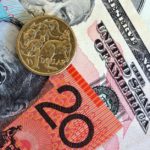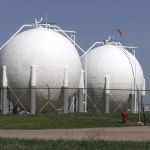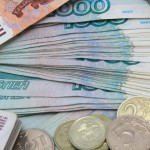 Gold continued to rise on Monday after rebounding from the lowest level since August 2010 and marking the worst quarterly loss since nine decades. The precious metal gained as buyers were lured by the attractive prices and traders closed out bets on lower prices known as short position covering.
Gold continued to rise on Monday after rebounding from the lowest level since August 2010 and marking the worst quarterly loss since nine decades. The precious metal gained as buyers were lured by the attractive prices and traders closed out bets on lower prices known as short position covering.
On the Comex division of the New York Mercantile Exchange, gold futures for August delivery traded at $1 240.75 per troy ounce at 8:57 GMT, up 1.39% on the day. The precious metal varied between days high and low $1 247.25 and $1 224.85 respectively. Gold settled 2.41% higher on Friday after rebounding from a 34-month low. The yellow metal lost 4.77% of its value last week, following a 6.80% decline during the previous one.
The precious metal has declined 27% this year, 23% of which during the second quarter, amid expectations of an earlier-than-expected scale back of Feds monetary easing program. The future of Quantitative Easing has been one of the main factors to determine the greenbacks strength. The dollar trades inversely to raw materials as a stronger U.S. currency reduces commodities appeal as an alternative investment and makes them more expensive for foreign currency holders.
Gold was hammered down during last two weeks as Ben Bernanke, Fed chairman, announced after the latest FOMC meeting that the central bank won’t scale down its monetary easing program just yet, but that is highly possible to happen within the end of the year, if the needed stable recovery signs are provided. According to Bernanke, Fed’s moves are tied to what happens in the economy and the central bank has no fixed plan, but sentiment points at reducing bond purchases. Bernanke said that if the economy continues to improve in line with Fed’s projections, it would be “appropriate to moderate the monthly pace of purchases later this year”, and end the program as the unemployment rate drops to 7%, which Fed expects to happen around mid-2014.
Feds expectations were partially met during the last two weeks as most of the U.S. economic data turned out positive, apart from the final Q1 GDP reading. On Thursday, the Department of Labor reported that Initial Jobless Claims mismatched projections of a 10 000 decrease by 1 000. The number of people who filed for unemployment assistance in the U.S. fell to a seasonally adjusted 346 000, compared to the previous period’s 355 000 revised reading, but slightly above projections of 345 000. Personal Income for May surpassed expectations of 0.2% and surged to 0.5%, up from April’s revised 0.1% figure. Personal Spending for May met anticipations at 0.3%, well above the preceding month’s revised reading of -0.3%. Core PCE (Core Personal Consumption Expenditures) met projections both on monthly and annual basis. Core PCE for May stood at 0.1%, up from April’s 0.0% and was 1.1% higher than May 2012.
On Friday, the Chicago PMI disappointed by mismatching forecasts of 55.0, standing well below at 51.6, also worse than May’s 58.7 reading. However, that bit of negative data was offset by the Final University of Michigan Confidence, which exceeded expectations of a gain to 83.0 and instead rose to 84.1, up from May’s 82.7.
Investors are now looking ahead into this week’s key U.S. data that will show if the economy’s recovery keeps in line with Fed’s projections. The ISM Manufacturing index is due on Monday and the ISM Non – Manufacturing Composite index on Wednesday, coupled with the Trade Account, which is expected to show a $40 billion deficit. Factory Orders will be published on Tuesday. On Wednesday, the ADP Employment Change and Initial Jobless Claims will give a preliminary insight into the U.S. labor market’s state, prior to Friday’s most important Change in Non-Farm Payrolls and Unemployment Rate indicators.
Elsewhere on the precious metals market, silver, platinum and palladium are all marking moderate daily gains. Silver for September delivery traded at $19.658 per troy ounce at 8:52 GMT, surging 0.97% for the day. Prices ranged between $20.065 and $19.370 an ounce. Silver crumbled 31% during the second quarter. Meanwhile, platinum October futures gained 0.57% for the day, trading at $1 347.60 per ounce. The metal lost 16% in the second quarter, the most since the three months to September 2008. Palladium for September delivery surged by 2.45% by 8:55 GMT, trading at $676.90 a troy ounce. Prices ranged between daily high and low at $679.30 and $658.50 respectively. Palladium fell 15% during Q2, the most since the three months ending September 2011.





